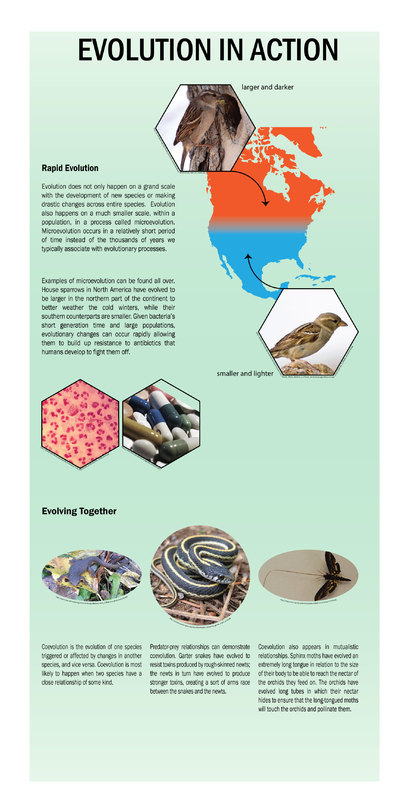Evolution in Action
Rapid Evolution
Evolution does not only happen on a grand scale with the development of new species or making drastic changes across entire species. Evolution also happens on a much smaller scale, within a population, in a process called microevolution. Microevolution occurs in a relatively short period of time instead of the thousands of years we typically associate with evolutionary processes.
Examples of microevolution can be found all over. House sparrows in North America have evolved to be larger in the northern part of the continent to better weather the cold winters, while their southern counterparts are smaller. Given bacteria’s short generation time and large populations, evolutionary changes can occur rapidly allowing them to build up resistance to antibiotics that humans develop to fight them off.
Evolving Together
Coevolution is the evolution of one species triggered or affected by changes in another species, and vice versa. Coevolution is most likely to happen when two species have a close relationship of some kind.
Predator-prey relationships can demonstrate coevolution. Garter snakes have evolved to resist toxins produced by rough-skinned newts; the newts in turn have evolved to produce stronger toxins, creating a sort of arms race between the snakes and the newts.
Coevolution also appears in mutualistic relationships. Sphinx moths have evolved an extremely long tongue in relation to the size of their body to be able to reach the nectar of the orchids they feed on. The orchids have evolved long tubes in which their nectar hides to ensure that the long tongued moths will touch the orchids and pollinate them
